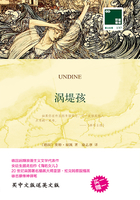樱桃树和白杨差不多,只是更加顽强。现在已是四月的最后一个星期,白色的樱桃花依然绽放,可已?渐渐虚弱,即将逝去。今年的时节晚了,树叶团团紧簇,鲜红的光亮中挥洒着轻柔的í色。这个地方的果树十分不同寻常,梨花和桃花会在同一时节开放。不过,现在这里有还未伸长的麦子,翠绿色的橄榄,柏树所没有的棕绿,长青橡树的黑色,石松浓重的绿团团,小桃树和杏树脆弱的绿色,七叶树强壮的新绿。而在这所有的绿色中,梨树清新光亮的绿色是可爱的、浓密的、轻柔的,像苹果绿色叶子柔和的饱满一样鲜明。在这绿色的海洋中,绿色一片一片的,一层一层的,像斜斜的一块板,像圆圆的肩膀,又像羽毛,像矮树丛,像挺直的灌木。有时在夜晚,从外面向绿色里望去,仿佛绿色带着绿色,带着金色在里面燃烧,显得光彩夺目。
在林里,矮灌木即将倒下,而松树在冬天里则稳稳地保持自己的站姿。冬天是最适宜石松生长的季节。一到圣诞节的时候,石松团团的深绿色更显得婀娜多姿。当柏树裸露地显示出自己高高的、墨绿色的身躯时,柳树仍然在蓝色的空气中展现着自己活泼的鲜橙色。大地染上μ紫色的时候,隆冬时节就到了。这儿将成为颜色的世界,颜色才是最美的风景。
当然,这一个星期还会有花的足迹,但这时候的花儿成了孤独的小东西,四处分散。你会在不?意间发现它们的足迹:提前出来的紫兰花,红润而有生命力;成群结队的蜜蜂兰,它们对自身的外表,都显露出刻意的、不屑的神情。当然,也少不了顶着巨大的花苞穗,长满茂密花儿的强壮粉红兰花,兰花那巨大的花苞穗如同饱满的麦穗一样,配上耀眼的紫色,让人觉得完美无缺。但零星的麦穗已?开花了,在紫色中旋着一幅由娇嫩小花编织成的精致花布。还有那些非常可爱的、米色的兰花,在它们的细长花蕊上有些棕色斑点。兰花喜欢在较潮湿的地方生长,因此它奇异柔和的穗是不常见的。其他的兰花都是小小的花形,漂亮的黄色。
五月一到,夜莺便不间断地唱着歌。这时候,小心翼翼的托斯卡纳杜鹃也会唱出平日里听不到的歌。接着,浅μ紫色的丁香花大量地出现,展示着它们柔嫩、穗状的花,直到空气中露出紫红,清澈透明地四处飘荡。
世界将变成一丛丛蝴蝶花的天下,它们得意而柔嫩地昂起头。五六月,谷物还没收割的时候,在野外,玫瑰色的唐菖蒲就混合在谷物中。而黑种草开着蓝色的花朵。但现在还没到五月或六月——只是四月末,春夏之间的间歇,在这个时节里:夜莺不停地歌唱;豆地里的豆花正在凋谢;豆的芳香正随着春天一起逝去;小鸟在巢里成长;橄榄已被修剪;葡萄已?过了最后的耕种时节;两个星期后豌豆成熟之前,没有多少活要做。这样才是变化,永不停息的快速变化。在阳光照耀的地方,变化似乎更显著,比在昏暗地带更彻底。而在没有阳光的地方,是一成不变的灰暗和阴暗。变化只是短暂的事,不会留下任何记号。
然而,对于生活在阳光地带的人,却是不同的概念。变化对他们来说就是现实,永久是人创造的,是一种囚禁。因此,生活在北面的人认为,变化中的世界实际上是悲惨的,因为世界只是短暂的,注定消逝的。世界的存在意味着自己的结束,这就是伤感本身。
而生活在南面的人,对他们来说,阳光具有决定性的作用,阴影或黑暗不过是相关联的事物——只是在人和太阳之间才会出现的东西。
对于人类来说,有一件事是千真万确的,那就是在这个世界上,仅有一个发光的太阳,黑色的影子不过是一个干扰的意外罢了。
而在我看来,尽管争议纷纷,但太阳一直光芒四射,也将永远光芒四射。在阳光下,即便死亡也是充满阳光的。阳光没有终点。
托斯卡纳的春天飞快地流逝,而我没有感到一丝的悲惨,这就是?因所在。太阳永远在照耀。如果不这样想,那就是我们的责任了。
向着阳光的山坡总是先走向春天,心中充满阳光的人心花永远绽放。只要心花绽放,到处都是美丽的春天。
这就是纽约
Here Is New York
[美国]埃尔文·布鲁克斯·怀特/Elwyn Brooks White
埃尔文·布鲁克斯·怀特(1899—1985),美国著名散文家、评论家。生于纽约,毕业于康奈尔大学。曾任《纽约人》杂志的编?和《哈帕斯》的专栏作家,在《纽约人》供职长达12年之久,他对《纽约人》的成功有着不可替代的贡献。同时,怀特在儿童读物的创作上也颇有建树,其代表作有《这就是纽约》。怀特的思想敏感独特,对生活的观察细致入微,文风朴实无华,尤其是一些游记性的文章,被广泛转载于大量课本与选本之中。其主要作品有散文集《拐角处的第二棵树》、诗集《冷漠的女士》等。
On any person who desires such queer prizes, New York will bestow the gift of loneliness and the gift of privacy. It is this largess that accounts for the presence within the city' s walls of a considerable section of the population; for the residents of Manhattan are to a large extent strangers who have pulled up stakes somewhere and come to town, seeking sanctuary or fulfillment or some greater or lesser grail. The capacity to make such dubious gifts is a mysterious quality of New York. It can destroy an individual, or it can fulfill him, depending a good deal on luck. No one should come to New York to live unless he is willing to be lucky.
New York is the concentrate of art and commerce and sport and religion and entertainment and finance, bringing to a single compact arena the gladiator, the evangelist, the promoter, the actor, the trader, and the merchant. It carries on its lapel the unexpungeable odor of the long past, so that no matter where you sit in New York you feel the vibrations of great times and tall deeds, of queer people and events and undertakings. I am sitting at the moment in a stifling hotel room in 90-degree heat, halfway down an air shaft, in midtown. No air moves in or out of the room, yet I am curiously affected by emanations from the immediate surroundings. I am twenty-two blocks from where Rudolph Valentino lay in state, eight blocks from where Nathan Hale was executed, five blocks from the publisher' s office where Ernest Hemingway hit Max Eastman on the nose, four mile from where Walt Whitman sat sweating out editorials for the Brooklyn Eagle, thirty-four blocks from the street Willa Cather lived in when she came to New York to write books about Nebraska, one block from where Marceline used to clown on the boards of the Hippodrome, thirty-six blocks from the spot where the historian Joe Gould kicked a radio to pieces in full view of the public, thirteen blocks from where Harry Thaw shot Stanford Whites, five blocks form where I used to usher at the Metropolitan Opera and only 112 blocks from the spot where Clarence Day the Elder was Washed of his sins in the Church of the Epiphany (I could continue this list indefinitely); and for that matter I am probably occupying the very room that any number of exalted and somewise memorable characters sat in, some of them on hot, breathless afternoons, lonely and private and full of their own sense of emanations from without.
When I went down to lunch a few minutes ago I noticed that the man sitting next to me (about eighteen inches away along the wall) was Fred Stone. The eighteen inches were both the connection and the separation that New York provides for its inhabitants. My only connection with Fred Stone was that I saw him in The Wizard of Oz around the beginning of the century. But our waiter felt the same stimulus from being close to a man from Oz, and after Mr. Stone left the room the waiter told me that when he (the waiter) was a young man just arrived in this country and before he could understand a word of English, he had taken his girl for their first theater date to The Wizard of Oz. It was a wonderful show, the waiter recalled — a man of straw, a man of tin. Wonderful!(And still only eighteen inches away. ) "Mr. Stone is a very hearty eater," said the waiter thoughtfully, content with this fragile participation in destiny, this link with Oz.















